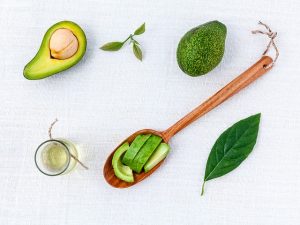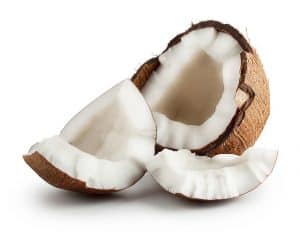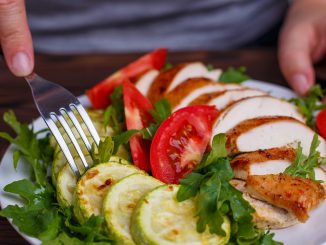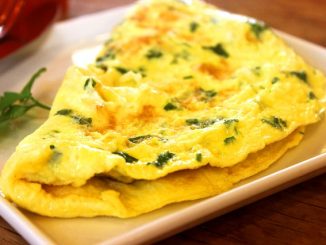
Have you decided to give the ketogenic diet a try? Perhaps you want to reap the benefits of this low-carb, low-insulin diet of healthy eating habits, but are concerned about the challenges ahead. Here are some tips and tricks you’ll want to use.
The ketogenic diet (or keto) is a low-carb, high-fat (LCHF) diet that forces your body to burn fat for energy – instead of carbohydrates. This is called ketosis – due to the elevated levels of ketone bodies that will be circulating in your blood stream. These are the by-products of fat metabolism. Consider ketosis to be the body’s ultimate fat-burning mode – and it’s great for weight loss, but it can also be a healthy, long-term lifestyle.
The ketogenic diet requires one of the more challenging lifestyle changes – because of the severe restrictions on carbs. Our food supply is awash in carbs – and expect your friends and family may not be on board with what they see as a “radical” or even “crazy” change. Lastly, if you are eating like most Americans your body is heavily adapted (addicted even?) to carbs and glucose for energy. And we’ll need to flip that switch over to fat-burning mode – aka ketosis. This isn’t going to happen overnight, and it will require substantial willpower and change to your lifestyle.
But with some preparation and knowledge – you can overcome these obstacles. We’ll talk about just that in this article.
Preparation is Critical
Preparation beforehand can make all the difference. Because of the strict dietary guidelines that keto requires it’s likely you are going to need to clean out the kitchen. This serves two purposes – you can remove any temptations from close reach, and you’ll familiarize yourself with what’s keto-friendly and what isn’t. Go through the refrigerator and cabinets – make a note of the carbohydrate rich foods and ingredients. What can go and what can stay? Thanks to the FDA’s food labeling requirements it’s pretty easy to figure out. Look for things that have a minimum of net carbs. Fiber is not counted because it’s indigestible and therefore provides no glucose in the blood stream and has no impact on insulin levels. Fiber is important because it provides bulk, and it iss utilized as food by our friendly gut bacteria. To find net carbs, examine the total carbohydrate, subtract fiber or dietary fiber (it varies by label), and that leaves you with net carbs. You will also want to be wary of any sugars and added sugars; these are to be avoided as much as possible.
What to do with the unwanted items? Eating everything in one last magnificent carb binge isn’t a good option – it’s just going to keep you from ketosis longer. But it does seem like a waste to throw the food away, so consider donating to the local food bank, if that is an option. Or simply leave it for other family members that aren’t going on your low-carb quest.
Second – you’ll need to acquire keto-friendly foods and meal ingredients. It might be best to start with a keto recipe book or website. That will give you many ideas for nutritious, low-carb meals that will stave off both hunger and boredom. When you’ve identified what you need to get – head to the grocery store – and stock up on both the ingredients and snacks.
Having keto-friendly snacks on hand can be a game-changer. In the early stages you will experience hunger pangs, and possibly carb “withdrawal” like symptoms. Having convenient snacks on hand helps deal with that. Over time, you will find that the severe hunger pangs and cravings lessen – this is your body adjusting to burning the abundance of body fat.
We won’t list all the various keto-friendly foods here, but try to cover all the bases – base ingredients, oils, condiments, fatty fish and meats, nuts, and snacks for on the go, etc. For specific ideas, check out our ketogenic diet primer.

Lastly, prepare to step outside your food comfort-zone. You may have to explore some options outside of your normal repertoire. Coconut oil is rich in Medium Chain Triglycerides (MCTs) – a type of fat that is easy for the body to utilize. It’s a keto power food – perfect to meet your desired high fat macro target and can be used for low-heat cooking. Maybe you don’t like the taste of coconut – avocado oil is another choice. And how about the avocado itself? On the keto diet you’ll learn to love them – high in low in carbs but high in monounsaturated fat, vitamins, minerals, and fiber – it’s a great choice.
Getting Others Onboard
You will get resistance from family and friends. Some can’t believe that anyone can (or would want to ) eschew carbs and sugars. First of all, carbohydrates are not an essential nutrient – but protein and fat are. There are certain types of fat and protein that are essential – meaning your body can’t produce them and you must get them from your diet. Carbs provide glucose (a simple sugar) and not much else. But isn’t glucose the “preferred fuel” for your body? It’s metabolized first, for certain, and it is useful for powering high-intensity physical effort. But your liver is an amazing organ – it does many things – including creating glucose out of excess protein, leftover lactic acid, and even from the other by-products of fat metabolism. Understand that even in a “zero carb” diet – your body will make the glucose it needs. The difference with this diet is that you will not be flooding your body with mega-loads of glucose 3 times per day.
The ketogenic diet is generally safe for healthy adults. Having said that, there are many medical conditions and circumstances for which you should consult a physician first (this is not an exhaustive list):
- Pregnancy (keto never recommended)
- Type 1 or Type 2 Diabetes
- History of pancreatitis
- Gall bladder disease
- Gastric bypass surgery
- Impaired gut function
- Decreased gastrointestinal motility
If in doubt, check with your doctor.
They will complain that it is “not natural.” But in fact quite the opposite is true. Ketosis is the process used by all of our ancient ancestors to survive times of famine and limited food availability – such as winter. It’s only been in the recent past that we’ve had such an abundance of carbs and sugar available at every meal.
They will object that it will require eating too much saturated fat. But studies have shown that saturated fat is easily metabolized when combined with a low carb diet. This is a significant finding and means that saturated fat may only be an issue in high carb diets – where the ever present insulin and blood sugar prevent fats from being metabolized as they are in ketosis. And in addition, the monounsaturated fats, such as olive oil, avocado oil, and fish oil, are recognized universally as being healthy. You can make those your cornerstone of your fat intake instead.
They will complain that you are not going to get all those “vitamins and minerals” from “healthy whole grains” and enriched breads – or enough fiber. We’ve been brainwashed by advertisers to think grains are the only source of those things. But they are not – those things can be found in vegetables – and in greater quantities and variety in most cases.
Lastly, they may really just not want to have to inconvenience themselves. Consider ways to make your meals both keto-friendly, but still acceptable to others. Serve sugary sauces on the side, accompany spaghetti with meatballs on the side, and lots of cheese to put on everything – these are just a few suggestions. There’s also no reason you can’t have a side salad made of low-GL veggies and drizzled with olive oil to accompany every lunch and dinner. And when eating out; discard the bun from the sandwich, steer clear of the bread basket, and load up on salad and veggies on the side instead of french fries.
So, in the end – everyone else doesn’t have to be onboard – but they do have to get out of the way. And if you stick with it long enough – they’ll see the benefits first hand – and their tune will change.
Getting Into Ketosis Quicker
As you know, ketosis requires a minimum of blood sugar – and this is stored in three places. First, there’s glucose circulating in your blood stream at all times, secondly your liver and skeletal muscle (such as biceps, quadriceps, etc.) can all store glucose in the form of glycogen.
To get into ketosis faster – we can deplete those stores ahead of time, by two possible methods.
Hard training can deplete glycogen stores – a full-body, intense muscular workout will ensure you are starting with a minimum of glucose.
Secondly a total or partial fast can accomplish the same thing. When you fast, you are not replenishing your glycogen stores. Your body will preferentially use the glucose to power your body, including the brain – which is responsible for as much as 20% of your body’s energy use. The challenge with this approach is that you will be combining hunger pangs with a mentally challenging situation – there’s sure to be carbs within easy reach – and this might take more willpower than you can muster.
You can also combine both methods. This will get you into the desired state quickest – but may be challenging. Consider that before your body is fully keto-adapted hard training on a minimum of carbs is not going to be pleasant.
Lastly, both these things are not required. Your body can and will deplete the glycogen stores given enough time.
How To Know You Are In Ketosis
Technically speaking, ketosis is defined as a metabolic state where circulating ketone bodies in your blood stream exceed a certain level (0.5 mmol/L). These ketone bodies can be used as fuel by most every part of your body, including your brain – which is the single biggest consumer of energy in your body. So, having a high level of ketones is not a bad thing – it’s precisely what we want for this diet to work as desired.
You’re in ketosis any time your the level of ketone bodies in circulation exceeds 0.5 mmol/L. You can measure this with products such as Bayer’s Ketostix product. It utilizes a chemical compound (nitroprusside) that can detect the levels of ketone bodies in urine. This will be the easiest, most accurate method for practical purposes.
There are other tell tale signs as well. First of all, your body will not utilize excess ketones – it will excrete them. Slightly fruity smelling breath (“Keto Breath”) and urine are typical. You will also experience an increase in urination – again this is how the body rids itself of excess ketones.
Avoiding Ketosis Drawbacks
Switching to ketosis bring some undesirable side effects. But the good news is that these are temporary.
Perhaps the most obvious is “Keto flu.” This usually comes on early in the process and resembles the general symptoms of the flu virus. Symptoms can include:
- Headache
- Nausea
- Mental fogginess
- Muscle cramps
- Increased heart rate
- Fatigue
- Feeling light-headed
- Lethargy
- Body aches
It’s believed that keto flu can be lessened by staying hydrated and being cautious to replenish electrolytes. Ketogenic diets can have a dehydrating effect, as the body rids itself of excess ketones. Therefore it’s essential to drink extra water. Electrolytes are also important – including: Potassium, Magnesium, Calcium, Phosphorous, and Chloride. Bone broth is an excellent keto food and can help with both hydration and replenishment of electrolytes. It’s also has significant gut healing properties.
The excretion of excess ketones also gives rise to “keto breath” – and this is bothersome but not a major issue. Keep some carb-free mints handy.
And lastly, constipation can be kept at bay by ensuring adequate intake of dietary fiber. Your best option is high fiber vegetables with a low Glycemic Load (GL). Green and cruciferous vegetables such as broccoli are an excellent choice. This is also a great way to get your micronutrients – vitamins and minerals.
Staying in Ketosis
Once you’re in ketosis staying there is easy – just keep carb intake to a minimum. Some find that they can increase their carb intake levels after the initial period, and can quickly return to ketosis. Athletes and very physically active people may find additional carbs helpful – glucose does help power intense physical efforts.
Making Ketosis a Long Term Lifestyle
Getting into ketosis is the hard part. Once you are fully keto-adapted, about 4-6 weeks, you’ll be reaping the benefits.

References
- E. Forsythe, et al. “Limited Effect of Dietary Saturated Fat on Plasma Saturated Fat in the Context of a Low Carbohydrate Diet” Lipids. 2010 Oct; 45(10): 947–962.

Tim is the founder of FitAtMidlife.com – an avid gym rat for 30+ years, he’s a reviewer of many, many shoes – and founder of the Speed Bag Gathering – the world’s only gathering of speed bag punching enthusiasts. See more gym reviews at Tim’s YouTube channel.



